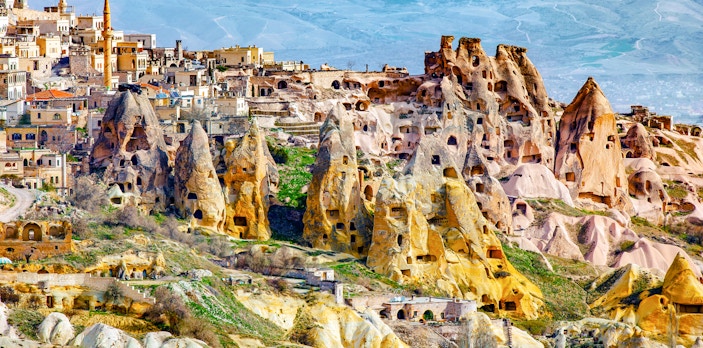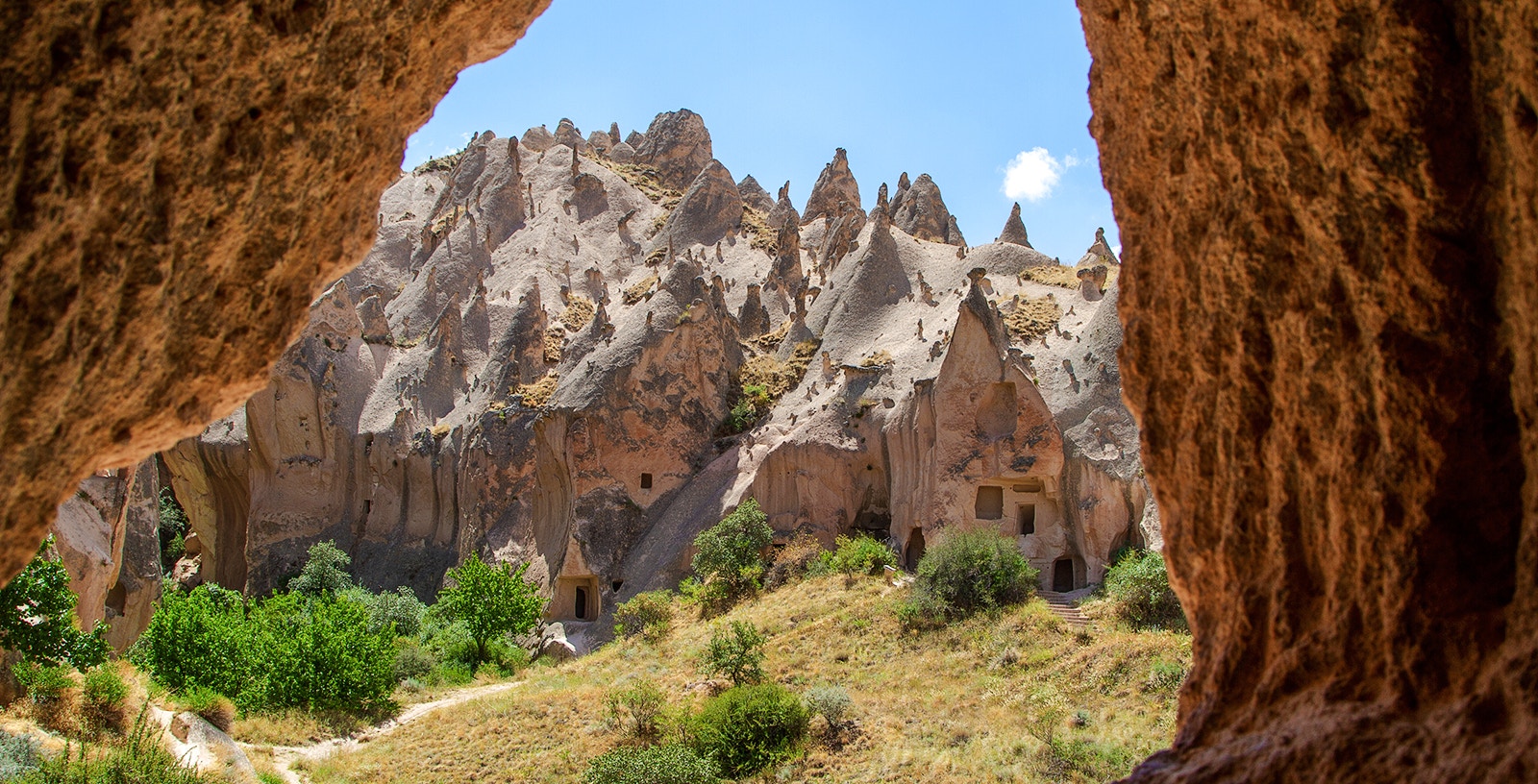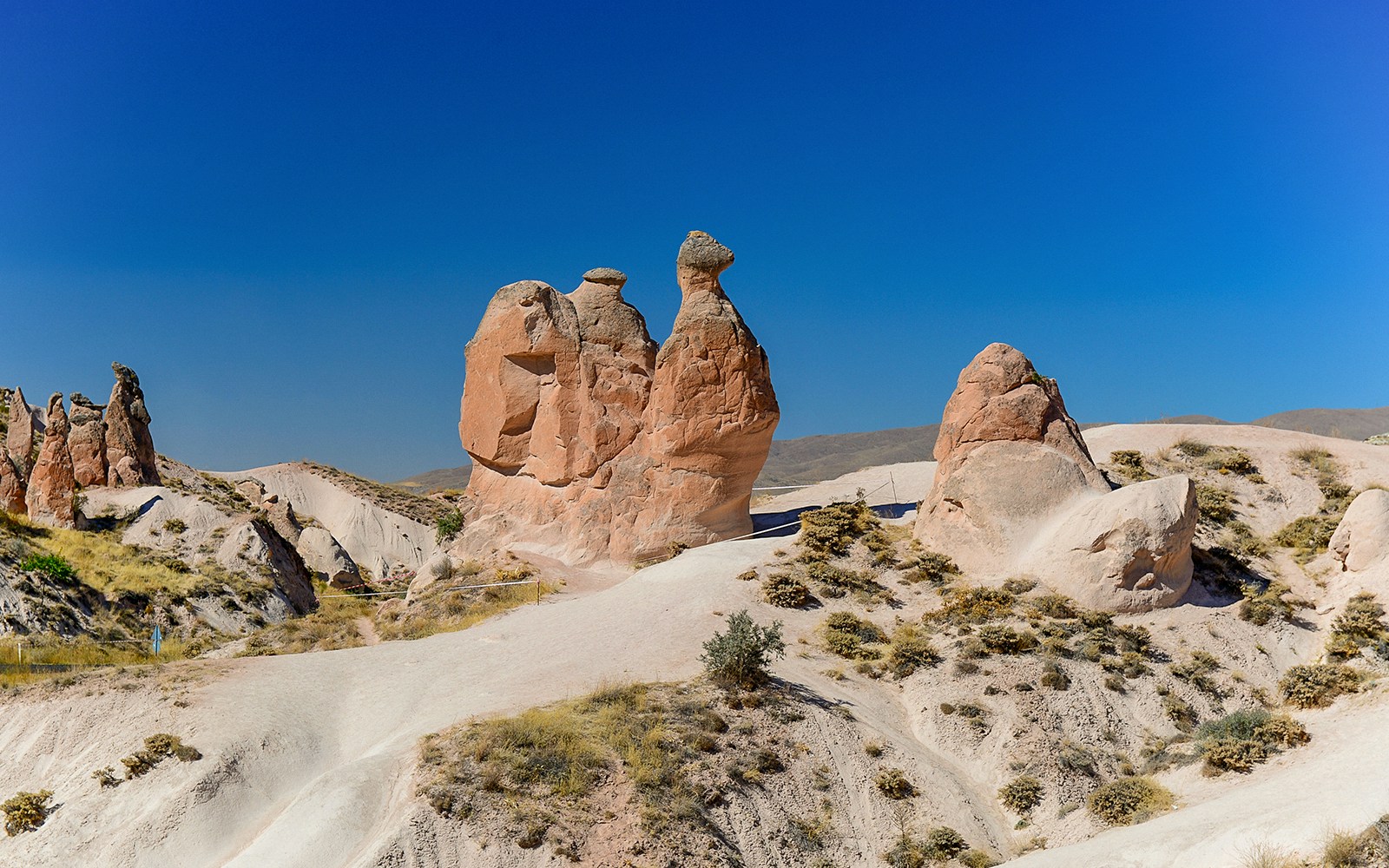Soar over the valleys at sunrise and watch hundreds of fairy chimneys in Cappadocia glowing beneath you. From above, you’ll see the golden light hitting the rock spires, the curves of Love Valley, and the surreal landscape stretching across Cappadocia, Turkey. It’s the most iconic way to experience the region’s beauty.
What are Fairy Chimneys and how were they formed?
The fairy chimneys of Cappadocia, Turkey are cone-shaped rock pillars formed naturally over millions of years. Standing up to 40 meters tall, each with a softer volcanic base topped by a harder rock cap. Locals call them Peri Bacaları, which translates to “Turkish fairy chimneys.” Their unusual shapes inspired ancient Anatolian myths that fairies once lived inside these rocks. Today, they’re among the most photographed landmarks in Cappadocia, Turkey, admired by travelers and geologists alike.
The story of the Cappadocia fairy chimneys, Turkey, began millions of years ago with volcanic eruptions from Mount Erciyes, Mount Hasan, and Mount Gullu. Layers of ash and lava solidified into soft tuff stone covered by harder basalt.
Over time, wind and rain eroded the softer rock, leaving tall cones protected by their basalt caps, creating what we now call the fairy chimneys. Later, early Christians carved homes, chapels, and entire monasteries inside fairy chimneys, turning natural formations into safe havens and living spaces.











